Top Trending Finance & Stock Market News & Highlights


GST reform: starting Monday, these goods will be subject to the highest tax. View the complete list
September 22 GST changes: Under the new tax structure, which goes into effect on Monday, items falling within these categories will be subject to the newly revised highest tax rate of 40% GST. View the items' list here.After its 56th meeting on September 3, 2025, the GST Council, which is led by the Indian federal government, voted to streamline the indirect tax system in India by redesigning the current goods and service tax (GST) slab structure into a "two-tier" system.Indian customers will benefit from a revamped "two-tier" tax structure that goes into effect on Monday, September 22, 2025. Depending on the type of commodity sold in the country, it will be subject to either the 5% or 18% tax band. In India, GST is now imposed in four slabs: 5%, 12%, 18%, and 28%. However, the government has since modified these slabs. Many products sold in the Indian economy will see price reductions as a result of the federal government's action; nevertheless, starting Monday, a wide range of products will also be subject to higher consumer taxes. 1. Sin Goods: Generally speaking, sin goods are things that are detrimental to society and health, such as cigarettes and pan masala. Cigarettes, pan masala, beedi, and other tobacco goods including chewing tobacco and gutka, as well as online gaming and gambling, would all be subject to a 40% GST tax starting on Monday, September 22, 2025. 2. Luxury cars: Four-wheelers with an internal combustion engine (ICE) capacity greater than 1,200cc and a length greater than four meters were also placed in a 40% tax level by the GST Council. In the past, the ex-showroom pricing of SUVs and MPVs, which are included in this group, was increased by 28% GST and 22% Cess. 3. Over 350cc two-wheelers: The GST Council raised the tax rate for two-wheelers with engines larger than 350cc from 28% GST and 3% Cess to 40%. Despite the removal of the Cess levy, two-wheelers with engines larger than 350cc will now be subject to a higher tax rate. 4. Soft drinks: The central government raised the GST rate from 28% to 40%, which will result in a price increase for soft drinks and other non-alcoholic beverages like Coca-Cola, Pepsi, Mountain Dew, Fanta, and flavor-infused waters. 5. Items that cost more when you're in the 18% tax bracket: Items that will be subject to GST at the higher 18% slab starting on Monday, September 22, 2025, include dining at restaurants, particularly those with air conditioning and premium outlets; consumer durables like refrigerators, washing machines, and air conditioners; beauty and grooming services at salons and spas; and high-end smartphones and imported devices.
Published 23 Sep 2025 01:19 PM
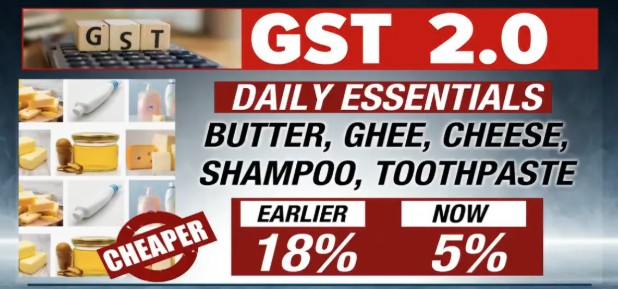

Live Updates on New GST Rates: When GST 2.0 goes into effect, food, cars, and televisions all get cheaper.
GST Reforms 2025 List: Goods and Services Tax (GST) reforms have become effective today, September 22, marking a historical shift in the country’s indirect taxation by merging four slabs into two (5% and 18%) and a special tax slab of 40% for “sin goods".The GST council, led by Finance Minister Nirmala Sitharaman, early in September announced a major overhaul in the indirect taxation system, aimed at simplifying the slabs, boosting the consumption and rationalizing the rates. Under the new plan, the government is set to merge the four slabs into two main categories with an additional “sin tax" bracket: 5% slab — for essential goods. 18% slab – for most other goods and services. 40% slab – for luxury and sin goods such as tobacco, alcohol, betting, and online gaming. This consolidation is expected to make tax compliance easier and also reduce prices on many items currently taxed at 12% or 28%.This consolidation is expected to make tax compliance easier and also reduce prices on many items currently taxed at 12% or 28%.Consumers will see essential items becoming cheaper from September 22, as several sectors from FMCG to Auto have announced earlier to pass on the benefits of lower GST to them.
Published 22 Sep 2025 05:13 PM
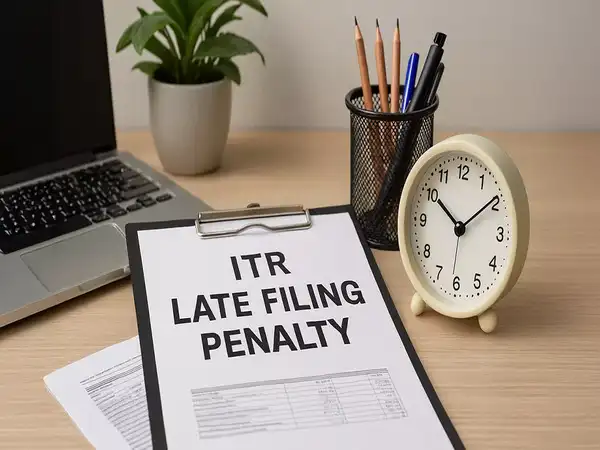

Live updates for the ITR due date: Will there be another extension of the income tax return deadline?
Date of ITR due REAL-time updates: The deadline for filing Income Tax Returns (ITR) for the assessment year 2025–2026 is now. Over 6.69 crore returns have already been received by the Income Tax Department, of which over 6.03 crore have been validated and 4 crore have been processed.Taxpayers who miss today's deadline risk interest on unpaid taxes, delayed refunds, and late fines of up to ₹5,000 (limited at ₹1,000 for individuals with incomes up to ₹5 lakh). Therefore, it is essential to file and confirm returns on time in order to prevent fines and guarantee prompt refund processing.The deadline is applicable to non-audit instances, such as the majority of salaried individuals, small enterprises or professions under the presumptive taxation plan, and Hindu Undivided Families (HUFs). It is recommended that taxpayers refrain from spreading false information about extensions and instead rely solely on official updates from Income Tax India.In order to assist last-minute filers in appropriately completing submissions, the department's helpdesk is open around-the-clock and provides assistance via phone, live chat, WebEx sessions, and social media.The department's help line is open around-the-clock, providing assistance via phone, live chat, WebEx sessions, and social media to help filers who are submitting at the last minute appropriately.
Published 15 Sep 2025 05:53 PM


Closing Bell: Sensex up 324 points, Nifty above 24,950; IT and PSU Banks rise, automobiles down
On September 10, Indian equities indices concluded well, with the Nifty closing above 24,950. The Nifty was up 104.5 points, or 0.42 percent, at 24,973.10 at the closing, while the Sensex was up 323.83 points, or 0.40 percent, at 81,425.15.We'll be returning tomorrow morning with all the most recent news and alerts as we wind up today's Moneycontrol live market blog. To view all of the global market activity, please visit https://www.moneycontrol.com/markets/global-indices.On Wednesday, markets gained almost half a percent, continuing their upward trajectory. Following a gap-up beginning, the Nifty index spent the first half of the day moving within a small range. However, volatility in the second half of the day reduced some gains, and it ultimately finished around 24,973 levels.With advances of more than 2.5 percent, the IT sector maintained its recovery, followed by the real estate, banking, and energy sectors. The auto industry, on the other hand, saw profit booking following multiple outperforming sessions, losing more than 1%. With the midcap and smallcap indices rising between 0.75% and 1%, market breadth stayed strong, supporting the bullish tone in both frontline and broader markets.Positive foreign capital market flows following a period of persistent depreciation, as well as increased confidence regarding the status of trade discussions between the US and India, helped to boost sentiment and maintain the upswing.Although the markets are slowly rising due to encouraging signals, the Nifty will need to maintain its participation from the two main industries—banking and IT—in order to progress toward the 25,250–25,400 range. Support has moved to the 24,650–24,750 level on the downside. In order to build up fundamentally sound counters across the board, we advise employing intermediate drops or consolidation phases while keeping a positive bias.
Published 10 Sep 2025 08:40 PM


Finance & Stock Market
Finance & Stock Market is financial management, which covers tasks including forecasting, budgeting, borrowing, lending, and investing. Finance can be broadly classified into three categories:
- Personal Finance
- Corporate Finance
- Public/government Finance
Lending, banking, investing, forecasting, and a wide range of other topics pertaining to the distribution and trade of financial assets are all included in the broad industry that is finance.
- NYSE - USA
- Nasdaq - USA
- Euronext - Netherlands
- Shanghai Stock Exchange - China
- Japan Exchange Group - Japan
- Shenzhen Stock Exchange - China
- Hong Kong Exchanges - Hong Kong
- National Stock Exchange of India - India
- LSE Group - UK
- Saudi Exchange - Saudi Arabia


Obtaining $3.4 million in Series A investment, Cashinvoice
A $3.4 million Series A funding led by HDFC Bank, Pravega Ventures, and Accion Venture Lab was obtained by Cashinvoice. By FY25, the company hope"By implementing cutting-edge SCF technology, this strategic investment will enable extended financial inclusion for the missing middle. It highlights our commitment to improving MSMEs' working capital management and cash flow, resulting in a more simplified and effective supply chain finance environment," Cashinvoice co-founder Shrinivas Kasar stated.Anchor firms and MSME partners benefit from Cashinvoice's digital invoice discounting marketplace, which integrates with corporates to handle loans against invoices. More than 15 lakh invoices worth more than Rs 15,000 crore have been processed thus far.s to have disbursed $2.4 billion in loans to MSMEs in order to grow operations, improve market presence, and create new products.Pravega Ventures, HDFC Bank, and current investor Accion Venture Lab were among the backers. The company plans to use the money to grow operations, improve its visibility in both new and existing markets, and create new products.Under the direction of co-founder and CEO Arun Poojari, Cashinvoice provides customized SCF solutions to anchor corporations, including some of India's top 100 corporates and its MSME partners (both vendors and distributors), through its digital invoice discounting platform. Its digital platform uses risk assessment and authenticated invoicing, and it integrates with anchor companies. By FY25, the company hopes to increase its discounting throughput to Rs. 20,000 Cr, which will enable digital loan processing against invoices for lenders and upscale the MSME base from the current 3,000 to 10,000.Cashinvoice was founded in September 2019 and has since made a profit by enabling the payment of over 15 lakh invoices, worth over INR 15 crore. It has done this by forming partnerships with Indian corporations, including Tata Motors, Bata, Bajaj Electricals, Oppo, Voltas, One Plus, Patanjali, Kalyan Jewellers, Paragon, and more."India's Digital Public Infrastructure prowess has allowed lenders multiple data points to assess credit risk beyond the traditional asset-based credit mechanism," Arun Poojari said in response to the news. Supply chain finance examines the vintage and pace of the buyer-seller connection while concentrating on financing particular transactions. It assists MSMEs in bringing predictability and regularity to their financial flows, allowing them to expand and create jobs. With this round, Cashinvoice will keep enhancing its offerings by capitalizing on India's DPI and the steady expansion of trade, which supports the rising GST collections.


Paytm asks merchants to link QRs to other banks’ accounts
Following the Reserve Bank of India’s (RBI’s) strictures on Paytm Payments Bank (PPB) last week, Paytm has directed its field sales executives to migrate merchant QR codes from their existing PPB accounts to accounts with other banks. For example, Manoj Kumar, who works for a retail chain ‘More’ in Indirapuram, Ghaziabad, said that representatives of the fintech major asked them to move the store’s funds from PPB to other bank accounts before February 29. The process has started over the weekend itself and the fintech major is trying to sensitise as many merchants as possible before the deadline of February 29 to ensure that their business transactions can continue unhindered. “We have been asked to migrate as many QRs as possible to alternate bank accounts by the end of the month,” said area sales executives Fe spoke to. This comes against the backdrop of panic that has spread among a section of merchants. As per a survey of 5,000 retailers on Paytm by Kirana Club, 68% of the respondents said that they have decreased their trust on the firm since RBI’s announcement. While merchants need to shift their PPB accounts, the good news is that the QR code, soundbox or card machine will not require any physical changes, the company confirmed. “In instances, where our associate PPB operates as a back-end bank, these services can seamlessly be transitioned to other partner banks. This means that for our merchant partners, there will be no disruptions, no need to revisit existing setups, and no additional effort,” said a company spokesperson.


Morgan Stanley sees opportunity, buys shares worth ₹244 crore
Morgan Stanley on Friday bought shares worth ₹244 crore in Paytm's parent company One97 Communications, representing a 0.8 per cent stake Financial services giant Morgan Stanley on Friday made an investment in Paytm's parent company, One97 Communications, by acquiring shares worth ₹244 crore through an open market transaction.Morgan Stanley, via its affiliate Morgan Stanley Asia (Singapore) Pte - ODI, purchased 50 lakh shares on the National Stock Exchange (NSE), representing a 0.8 per cent stake in Paytm. The average price per share was ₹487.20, resulting in a total deal size of ₹243.60 crore. However, details about the sellers remain undisclosed, PTI reported.This comes after the banking sector regulator has found potential violations, including the misuse of customer documentation rules and non-disclosure of material transactions. Paytm shares price faced another 20 per cent decline on the NSE. This adds to a total of 36 per cent drop in the share price in just 2 days after the Reserve Bank of India (RBI) directed Paytm Payments Bank Ltd (PPBL), an associate of Paytm, to cease accepting deposits or top-ups in various accounts, wallets, and instruments from March 1. Morgan Stanley, via its affiliate Morgan Stanley Asia (Singapore) Pte - ODI, purchased 50 lakh shares on the National Stock Exchange (NSE), representing a 0.8 per cent stake in Paytm. The average price per share was ₹487.20, resulting in a total deal size of ₹243.60 crore. However, details about the sellers remain undisclosed, PTI reported.In related news, there are reports that the RBI is contemplating revoking the license of Paytm Payments Bank as early as next month.


Global stocks hit two-year highs, as dollar eases
Global equities rose to a more than two-year high and the S&P 500 touched a record peak on Wednesday, as strong earnings offset jitters related to US regional banks and China markets. Bonds were under modest pressure, as comments from Federal Reserve officials reaffirmed expectations that the central bank may not soon cut rates.The MSCI world equity index, which tracks shares in 49 nations, gained 0.37% by 10:11 a.m. EST (1511 GMT) after hitting its highest since mid-January 2022. Markets got a boost from a rally in Chinese blue-chips. On Wall Street, the Dow Jones Industrial Average rose 0.25% to 38,619.03, the S&P 500 gained 0.48% to 4,978.24 and the Nasdaq Composite added 0.48% to 15,683.15. "We are at the midpoint of the 4Q earnings reporting season, and we would say that there has been more good news than bad," Arthur Hogan, chief market strategist with B. Riley Wealth, said in a morning note. The US regional banking sector remained a concern as Moody's downgraded New York Community Bancorp to junk citing pressure on its funding and liquidity. The stock lost 22% on Tuesday, to be down 60% since it reported surprise losses last week. Chinese regulators continued efforts to steady markets, placing further curbs on short selling and state investors said they were expanding their stock buying plans. President Xi Jinping would discuss the stock market with financial regulators, Bloomberg News reported, though there was no confirmation this had happened or what was discussed. The head of China's securities regulator was replaced on Wednesday, according to Xinhua news agency, as policymakers struggle to stabilise the country's main stock indexes after a plunge to five-year lows.


Stock Market LIVE Updates | Nifty 50, Sensex open higher, Paytm down nearly 10%
Suven Pharma, Performance over the next few quarters likely to remain soft due to near-term macro challenges and industry-wide inventory de-stocking in specialty chemicals and the impact of Covid molecule in the CDMO business. Net profit for the quarter fell 56%, while revenue declined by 38%. Margin also narrowed to 29.78% from 41.5% last year.Following Reserve Bank of India’s (RBI) crackdown on Paytm Payments Bank, several Indian startup founders have written to the Prime Minister’s Office (PMO), Finance Ministry as well as the central bank requesting a rollback restrictions imposed on the fintech led by Vijay Shekhar Sharma, sources told CNBC-TV18 on February 6Net profit of ₹2,442.2 crore misses CNBC-TV18 poll estimate of ₹3,200 crore. Revenue and EBITDA in-line with estimates, while margin of 52.9%, higher than expectations of 52.2%. On a sequential basis, the margin narrowed by 20 basis points, while profit rose over 80%. India mobile services Average Revenue Per User (*ARPU) stood at ₹208 from ₹193 during the same quarter last year. Ashok Leyland reported a robust Q3 with an EBITDA of ₹1114 Cr (12.0%) and a net profit of ₹580 crore, marking a 60% increase over Q3 FY23. Revenues stood at ₹9273 crore, a 2.7% growth. The company achieved a historic high commercial vehicle volume of 1,38,416 units in the first nine months of the fiscal year. Despite global challenges, it recorded a 6.5% growth in export volume. The debt was ₹1747 Cr at the end of Q3 FY24, with a debt-equity ratio of 0.2 times.


Varun Beverages Q4 Results: Cons PAT at Rs 132 crore; final dividend declared
Varun Beverages Ltd, PepsiCo's largest franchise bottler, on Monday reported a consolidated net profit of ₹132 crore for the fourth quarter ended December 2023, up 77% year-on-year, helped by growth in revenue and improved profit margins. The company, which follows the calendar year as its financial year, had posted a net profit of ₹74.7 crore during the October-December quarter a year ago. Its revenue from operations during October-December 2023 stood at ₹2,731 crore, a jump of 21% as compared with ₹2,257 crore in the the year-ago period, Varun Beverages said in a regulatory filing. Varun Beverages' total expenses stood at ₹2,552 crore, a jump of 17% as against ₹2,177 crore. The board of PepsiCo's largest franchise bottler also recommended a final dividend of ₹1.25 per equity share for the financial year ended December 31, 2023 to the shareholders of the company. The record date will be fixed by the Board of Directors of the company. Ravi Jaipuria, Chairperson of Varun Beverages, said that despite the abnormally high unseasonal rains in the peak season, his company concluded 2023 on a strong note. He said his company witnessed a healthy double-digit volume growth in both Indian and International markets. "Our consolidated sales volume increased by 13.9%, and the net realisation per case increased by 7% in 2023. Both these together contributed to our remarkable revenue growth of 21.8 per cent and an impressive PAT growth of 35.6 per cent. In line with our strategic objectives, we have successfully commissioned multiple greenfield and brownfield facilities across key geographies during the year. This expansion not only strengthened our manufacturing capabilities but also extended our market reach," he added.Shares of Varun Beverages Ltd was trading almost flat at ₹1,287.75 apiece on the NSE.


Over 50 smallcap stocks gain between 15-50% as Sensex logs best week in 2024; do you own?
Nearly 50 smallcap stocks logged a double digit rise in their stock prices - in the range of 15-50 per cent last week, with the benchmark BSE Sensex logging its best week in 2024 so far, as the government's fiscal prudence in Interim Budget 2024 also boosted sentiment. The benchmark Nifty 50 index hit an all-time high for the fifth time this year on Friday, driven by gains in heavyweights such as Reliance Industries and information technology (IT) stocks.On the stock-specific front, NBCC (India), HCC, IRB Infra, Shakti Pumps, Punjab & Sind Bank, KPI Green Energy, Tata Investment, Andrew Yule, Infibeam Avenues, Man Industries, Indian Bank, PTC Industries, Jaiprakash Power, Zen Technologies, SpiceJet, UCO Bank, Orient Green Power, and others are among the smallcaps that logged a double-digit rise in their share prices last week. The government's adherence to its fiscal consolidation roadmap and thrust on capex are positive for bonds and the impact on equities has been as expected, said Abhishek Goenka, founder and CEO of IFA Global. The gains in mid-caps last week were capped by Paytm shares nosediving 20 per cent for the second day in a row, since the central bank ordered its banking arm to stop taking fresh deposits. Markets rebounded after spending two weeks in a corrective phase and gained around two per cent, led by favorable cues. The tone was positive for most of the week citing favorable global cues and buying in select heavyweights however underperformance of banking majors continues to weigh on the sentiment.Frontline indices logged their best week this year so far, led by large-cap stocks like Reliance Industries, which logged its best week since June 2022. On the weekly basis, the BSE benchmark jumped 1,384.96 points or 1.95 per cent, and the Nifty climbed 501.2 points or 2.34 per cent."Large-caps like Reliance and HDFC Bank have come to the fore in this leg of the rally," said Saurabh Jain, assistant vice president of research for retail equities at SMC Global. The allocations could shift further towards the segment from small- and mid-caps as investors seek safety in an expensive market, according to analysts.The BSE benchmark declined 106.81 points or 0.15 per cent to settle at 71,645.30 on Thursday when the finance minister presented Interim Budget 2024 in the Parliament. The Nifty 50 dipped 28.25 points or 0.13 per cent to 21,697.45 on February 1. PSU bank surged over two per cent on account of the 10-year G-Sec yield falling to an eight-month low at 7.04 per cent after the finance minister announced a lower borrowing plan.


Banks await RBI nod on KYC challenges at Paytm before moving business
Digital payments player Paytm is awaiting the Reserve Bank of India’s (RBI) approval to start moving its settlements business from Paytm Payments Bank to other lenders. But issues around KYC (Know Your Customer) of the accounts could be a major hiccup holding up the process. Two senior bankers in the know told ET that given Paytm was involved in issues around KYC of its user base in the past, bankers are looking for directions from the RBI before taking on the business. KYC is a process that requires a potential customer to submit original identity documents to a bank before being able to access its services. The central bank allows digital KYC through video verification. “We have to be careful about who we are doing business with. In this case, we need to be sure of the KYC of the merchants as well as the customers, so the central bank will need to take a call on that,” one of the bankers said. This will take time, and the banking regulator will only take the call after detailed consideration and thorough scrutiny of its own. The actual number of proper KYC-ed users of Paytm will be scrutinised too, the bankers added. The RBI did not respond to emailed queries from ET. On January 31, the RBI asked Paytm Payments Bank to stop offering basic banking services from February 29. It has effectively asked its customers to move all their funds from the payments bank or use up their available balance.The language and the directive from the banking regulator came as a shock to the banking and fintech industry. Several industry insiders said that coming back from this situation might be a huge challenge for the bank promoted by Paytm founder Vijay Shekhar Sharma.


The Following Bitcoin Halving Is Set for April 2024: Why Is It Important?
The most costly cryptocurrency asset to dominate the market since its launch in 2009 is Bitcoin, the first cryptocurrency ever created. When Bitcoin was first created, its anonymous creator—known only by the pseudonym Satoshi Nakamoto—capped the number of tokens in circulation at 21 million. This basically indicates that once there are 21 million Bitcoin in circulation, no more will be created. A regular process known as "Bitcoin halving" takes place to prevent that from occurring. The Bitcoin blockchain undergoes a halving process every 210,000 blocks are mined. Following a halving, miners' block rewards are cut in half, which lessens their incentive to mine Bitcoin blocks and stifles the flow of new coins into the network. It takes three to four years for the process of halving to occur because that is how long it takes to mine 210,000 blocks on the Bitcoin blockchain. The first Bitcoin halving process took place in 2012, following its creation in 2009. The payout for mining Bitcoin decreased to 25 BTC at that time from 50 BTC. The reward for mining bitcoin decreased from 25 bitcoin to its current price of 6.25 bitcoin during the second and third halving processes, which took place in 2016 and 2020. BitPanda records the history of Bitcoin halving.With Bitcoin currently trading at $42,812 (approximately Rs. 35.5 lakh), the reward value for Bitcoin miners is 6.25 BTC, or $269,465 (approximately Rs. 2 crore). As stated in the code that Satoshi Nakamoto compiled, the Bitcoin halving event is only planned to occur 64 times in total.


In a pre-Series A funding round, EV ride-hailing company Snap-E Cabs raises $2.5M.
Snap-E Cabs, an EV ride-hailing startup, earns $2.5 million in a pre-Series A funding round headed by Inflection Point Ventures.Snap-E Cabs is a ride-hailing platform for electric vehicles that offers 100% electric mobility solutions that are dependable, economical, efficient, and sustainable. The funds generated will go toward hiring more employees to support the company's expansion, making technology upgrades, launching new tech-enabled services, and growing its operations into other regions."In addition to upending the world's oil markets, India's shift to electric vehicles positions the nation—with its 1.4 billion people and quickly expanding economy—as a major player in the global EV market, signifying a significant step toward sustainable development," stated Mayank Bindal, the founder and CEO of Snap-E Cabs.In line with the company's announcement, the funds would be invested in technology upgrades and new tech-enabled services to improve operating capabilities.The firm also wants to extend its services to new regions and increase its geographic reach. According to the announcement, the company places a lot of emphasis on talent acquisition to make sure it has the trained personnel necessary to support its growth and innovation initiatives.Inflection Point Ventures led a Pre-Series A Round that saw USD 2.5 million obtained by Snap-E Cabs, a platform for electric vehicle (EV) ride-hailing. The money raised will go toward hiring skilled workers, modernizing equipment, and expanding into new areas.The company has experienced significant growth, operating 600 automobiles annually with an Annual Recurring Revenue (ARR) of $35Cr. With a hybrid B2B and B2C approach, Snap-E Cabs guarantees quick vehicle rotation and less than 5% downtime. The company sets itself apart with features like a fleet that is entirely electric, no surge pricing, and no cancellations.Notable alliances that Snap-E Cabs has forged include contracts with the West Bengal government and the Airport Authority of India (AAI). An important 5-year contract for EV operations at Howrah train Station, a major Indian Railways train terminal, has been obtained by the business.Leading the Pre-Series A Round, Inflection Point Ventures (IPV) has invested over INR 650 Cr in more than 200 deals. The managing director of IPV, Rahul Wagh, highlights the importance of decarbonizing transportation on a worldwide scale and notes that India offers a favorable climate for e-mobility.The founder and CEO of Snap-E Cabs, Mayank Bindal, highlights the growing trend of electric car adoption worldwide as well as India's audacious goal of having 30% of its fleet electric by 2030. According to Bindal, India's transition to electric vehicles is an important step toward lessening its reliance on foreign oil, promoting sustainable development, and establishing the nation as a prominent player in the global EV industry.Snap-E Cabs currently operates a fleet of 600 electric vehicles in Kolkata; by the end of FY 24, it hopes to increase that number to 300–400 EVs. Additionally, the company plans to add 1500–2000 more EVs to its fleet and expand its services to two or three more locations in FY 25.


Finance Secretary: "No Conscious Discrimination" Regarding the Center-States Funds Row
According to TV Somanathan, the finance secretary, financial allocations to states—whether through tax devolution or money from federally sponsored welfare programs—are determined by consistent rules that prohibit discrimination. She made this statement in an exclusive interview with NDTV. The remarks made by Mr. Somanathan coincide with a day after a heated argument between Congress MP Adhir Ranjan Chowdhury and Finance Minister Nirmala Sitharaman over claims that non-BJP states are "deprived of (financial) dues.""In the operation of the Finance Ministry as regards funding to states, we go by formulae that have been laid down by the Finance Commission... we have not discriminated, for or against, any state government," Mr. Somanathan explained today, emphasizing what the Finance Minister had stated.There doesn't seem to be any intentional discrimination, but I won't get into the political aspects." He stated that the distribution of GST, or the sharing of tax revenue, is based on percentages established by the Finance Commission and examined by the Comptroller and Auditor General. Bengal and Punjab, among other states, have regularly claimed withholding dues. This issue has been contentious for years. He emphasized that these were immutable and that funds were disbursed in accordance with the guidelines; yesterday, Ms. Sitharaman reiterated this and added that she was unable to modify them "as per my whims". According to Mr. Somanathan, the distribution of funds for the center's sponsored schemes is also based on predetermined percentages: 60-40 for "mainstream" states and 90-10 for northeastern or hill states. We disburse money in percentages, so long as the prior installment was used, the funds will be disbursed. Thus, I can state unequivocally that the Finance Ministry is nondiscriminatory. I am unable to comment on the complaints that some states may have regarding the Finance Commission's percentages.However, we have followed the Finance Commission's recommendations exactly," Mr. Somanathan stated. In response to a query regarding the conflict between the center and the ruling Trinamool Congress of Bengal—wherein Chief Minister Mamata Banerjee staged a protest event last week to demand the state's "dues"—the Finance Secretary informed NDTV that the Prime Minister's Office had emphasized that Bengal receive its fair share.
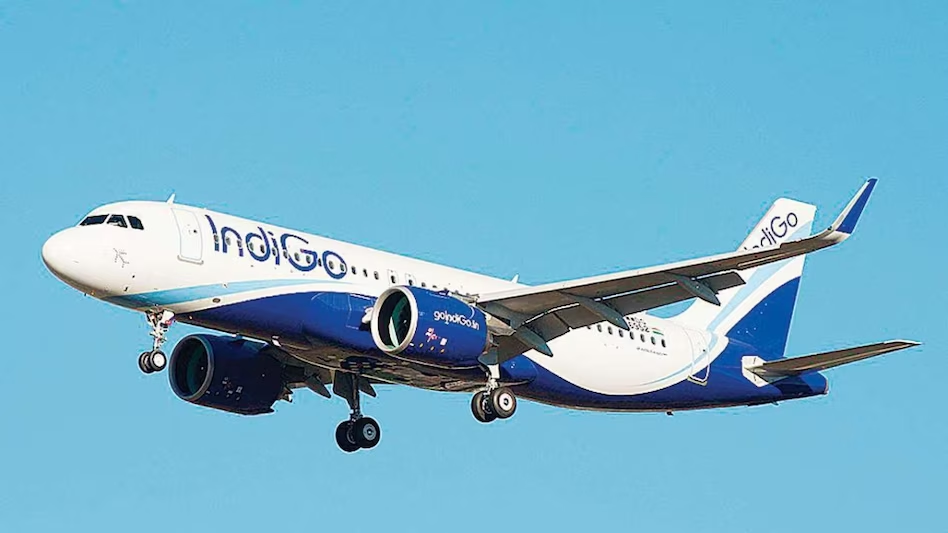

IndiGo Q3 profit more than doubles to Rs 2,998 crore
IndiGo’s parent InterGlobe Aviationon on Friday reported more than doubling of its profit after tax to Rs 2,998.1 crore in the three months ended December 2023, as it remained profitable for the fifth straight quarter. In the year-ago period, the profit after tax stood at Rs 1,422.6 crore. “For the third quarter of financial year 2024, we reported a profit after tax of 30 billion rupees with a profit after tax margin of 15.4 per cent. With these 5 consecutive quarters of profit we continue to recover from the losses of Covid and have now become net worth positive again,” IndiGo CEO Pieter Elbers said in a release. The company’s total income in the third quarter of the current fiscal rose to Rs 20,062.3 crore from Rs 15,410.2 crore in the same period a year ago. “For the quarter, our passenger ticket revenues were Rs 171,572 million, an increase of 30.3 per cent and ancillary revenues were Rs 17,600 million, an increase of 23.8 per cent compared to the same period last year,” the release said.IndiGo is the country’s largest airline.


Infra focus, fiscal prudence are positives for street
The interim Budget on Thursday maintained the government’s focus on infrastructure development while surprising the street with its fiscal deficit target. In an election year, the government resisted the temptation to announce populist measures. For Financial Year 2024-25 (FY25), capital expenditure (capex) was hiked 17 per cent to Rs 11.1 trillion. In FY24, capex was hiked by 33 per cent. The fourth straight hike is expected to take the capex to gross domestic product (GDP) ratio to 3.4 per cent in FY25 compared to 3.2 per cent in FY24. ICICI Direct Research said capex growth is on a high base of the last four years and has tripled in that period, resulting in a multiplier impact on economic growth and the moderation in the interim Budget was on expected lines. The key takeaway was the aggressive fiscal deficit target of 5.1 per cent for FY25 compared to the market expectation of 5.5 per cent. The government said it is on course to hit the sub-4.5 per cent number for the metric by FY26. Its expectations are based on higher tax collections, dividends from the Reserve Bank of India and public sector companies, and control on expenditure. With the fiscal deficit in check, the government’s market borrowing in FY25 is expected to be Rs 14.1 trillion compared to Rs 15.4 trillion in FY24. HSBC said small savings have played an important role in funding the fiscal deficit. The savings funded 27 per cent of the fiscal deficit in FY24 compared to 23 per cent in FY23. However, India Ratings and Research said the system-wide capex growth hinges on continued recovery of state spending (up 42 per cent year-on-year in the first eight months of FY24) and hope of acceleration in tentative recovery in private sector capex. The states account for two-thirds of overall capex. In a flat market on Thursday, the Nifty PSU Bank Index was the biggest gainer among sectoral indices by jumping 3.1 per cent. Among other sectors, sentiment was also positive in the logistics space as the three largest listed companies by market capitalisation registered gains between 1-5 per cent. The interim Budget announced a new housing scheme for the middle class as the ongoing Pradhan Mantri Awas Yojana (Grameen) aims to build crores of new homes. The proposals for housing and infrastructure development are expected to boost the real estate and building materials sectors. However, the Nifty Realty and the building materials companies ended in the red. The interim Budget did not have major measures in the consumer space. Consumption is weak, especially in rural India, as indicated by corporate earnings for the last few quarters. The Budget doesn’t provide any near-term solution for quick revival for consumption, said Motilal Oswal Financial Services.


Budget offers lower borrowing plan, 10-year bonds suffer 8-month steepest fall of 8bps
India's 10-year bond yield fell 8 basis points, making its steepest fall in the last eight months, after the government surprised with a lower-than-expected borrowing programme in its Union Budget for FY25. The 10-year bond yield ended at 7.07 percent, down 8 basis points, its maximum fall since May 3, 2023, from its previous close of 7.14 percent. The government announced Rs 14.13 trillion in the fiscal year starting April 1. A Moneycontrol poll estimated around Rs 15-16 lakh crore for the fiscal year 2024-25, with net borrowing estimated at Rs 11.50-11.75 lakh crore. The net borrowings, adjusted for maturities, are planned at Rs 11.75 trillion for the next fiscal year, according to Finance Minster Nirmala Sitharaman. Analysts said the borrowing programme is lower than expected as India prepares for big foreign inflows on global index inclusions. In FY24, the Centre declared the gross market borrowing at Rs 15.43 lakh crore, marking an 8.6 percent increase from the borrowing in 2022-23. "While the net borrowings for FY25 are in line with our expectations, lower-than-expected gross borrowings possibly could be attributed to the government utilising its surplus from the GST compensation fund (a public fund) to pay off their debt for FY25 to RBI or market participants, leading to a difference of Rs 1.24 trillion between actual total redemption and the (lower) market loan redemption taken in the budget.


The defense budget for 2024–2025 is estimated to be ₹ 6.21 lakh crore in the interim budget.
The government on Thursday unveiled an ambitious plan for "deep-tech" technologies in the military sphere and modestly raised the defense budget from ₹ 5.94 lakh crore to ₹ 6.21 lakh crore for 2024–2025. A sum of ₹ 1.72 lakh crore was allocated to the military for capital expenditures, which primarily comprise the acquisition of new weaponry, aircraft, warships, and other military hardware, in the interim Union budget that Finance Minister Nirmala Sitharaman presented in Parliament. The budgetary allotment for capital expenditure in 2023–2024 was ₹ 1.62 lakh crore.The finance minister also announced that a new scheme will be launched for strengthening deep-tech technologies for defence purposes and to expedite 'atmanirbharta' or self-reliance in the area.The Ministry of Defence (Civil) will receive ₹ 15,322 crore, the defense services will receive ₹ 2,82,772 crore, and defense pensions will receive ₹ 1,41,205 crore. The total revenue expenditure has been estimated at ₹ 4,39,300 crore. Amounts ₹ 40,777 crore and ₹ 62,343 crore, respectively, have been set aside for aircraft and aero engines and "other equipment" in the capital outlay for defence services. ₹ 23,800 crore has been allocated for the naval fleet, while ₹ 6,830 crore is for projects involving naval dockyards. The Indian Air Force incurred the largest capital outlay of ₹ 57,137.09 crore in the budget for 2023–24. This amount comprised ₹ 15,721 crore for the purchase of aircraft and aero engines and ₹ 36,223.13 crore for other equipment. For 2024–2025, the Army's revenue expenditure is estimated to be ₹ 1,92,680 crore, while the Navy and Indian Air Force will receive ₹ 32,778 crore and ₹ 46,223 crore, respectively.The overall defense budget allocation, according to Dr. Laxman Kumar Behera, Associate Professor at the Jawaharlal Nehru University's Special Centre for National Security Studies, is modest overall and reflects the government's priorities for the military. "The allocations did not show any lack of commitment to the armed forces," he stated to PTI.Additionally, Dr. Behera characterized the ₹ 10,000 crore increase in capital expenditure outlay as a "healthy sign".


India’s Crypto Industry Misses Mention in FM’s Budget 2024 Speech, No Change in Taxes
"Social media platforms have been inundated with posts from the Indian crypto and Web3 industries pleading with the government to ""ReduceCryptoTax"" for days now. In the interim budget speech she gave to the parliament on Thursday, February 1, India Finance Minister Nirmala Sitharaman did not even bring up the cryptocurrency industry, despite the outcry. Members of the industry feel a little ignored and let down by this. The business community does not, however, give up hope that the elected government's finalized budget may undergo some modifications following the conclusion of India's general elections later this year. During her hour-long speech, Sitharaman stated that no tax changes are being implemented at this time. ""We believe crypto and virtual digital assets can be a force multiplier in achieving 'Viksit Bharat' by empowering individuals at the grassroots level,"" WazirX vice president Rajagopal Menon said in response to the development. Given that India is at a turning point in the cryptocurrency revolution, provisions for long-term financing of domestic crypto projects will benefit both digital public infrastructure and the PM's goal for ""Anusandhan"" (research). We anticipate that these developments will be taken into consideration by the government in addition to our current requests for a reduction of TDS rates to 0.01 percent and an offset of trader losses." The hashtag #ReduceCryptoTax has been trending on X in India since last week, and thousands of posts have called for an update to the country's crypto tax laws. India implemented a 30 percent tax on all cryptocurrency profits in July 2022, in addition to imposing a one percent tax deduction on each cryptocurrency transaction. Industry insiders claim that this tax structure has caused a decline in cryptocurrency-related activity in India, which has resulted in the migration of Web3 talent and businesses to countries with more hospitable tax regimes. Numerous cryptocurrency companies in India have even declared layoffs, citing a decline in users and inquiries about the industry.The three demands from the cryptocurrency community were anticipated to be addressed in this budget: carrying forward losses, similar to stock gains, and flexible tax slabs with a TDS reduction from one percent to 0.01 percent on each transaction.However, these recommendations from the cryptocurrency industry have not been taken into consideration for this interim budget. The finance minister did make an announcement about a plan to provide a 50-year interest-free loan of Rs. 1 lakh crore to assist India's youth, which is seen favorably by the crypto community.
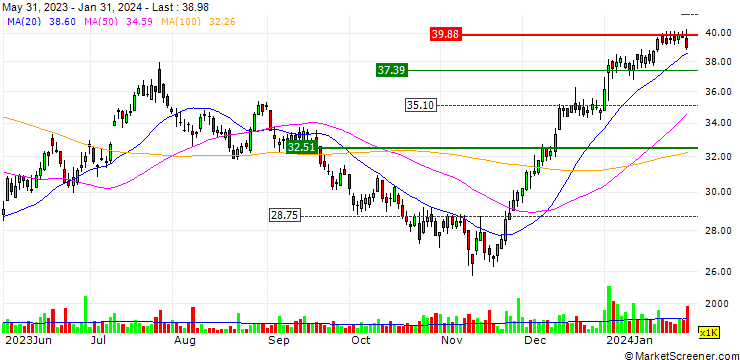

Board Appointments Announced by Lazard, Inc., Effective February 1, 2024
With effect from February 1, 2024, Lazard, Inc. announced the appointment of former PayPal CEO Dan Schulman and former US Chairman and Managing Partner of the Americas for Ernst & Young to its board of directors. As the CEO of PayPal, Dan Schulman, an accomplished executive and board member, oversaw the company's metamorphosis to completely change the way consumers transfer and manage money. At the moment, he is a member of the boards of Verizon Communications and Cisco Systems.Previous executive positions include CEO and President of Priceline Group, President at Sprint Nextel Corporation, Group President at American Express, and founding CEO of Virgin Mobile USA. Additionally, Mr. Schulman worked with AT&T for eighteen years, holding a number of positions, including President of the Consumer Markets Division. In addition to being vice-chair of the Economic Club of New York, he is on the boards of the Cleveland Clinic and the Council on Foreign Relations.He graduated from Middlebury College with a B.A. and New York University with an M.B.A. Stephen R. Howe Jr. is a highly esteemed CEO, member of boards, and specialist in corporate governance, audit, and financial services. He worked for Ernst & Young for 35 years. From 2012 to 2018, he guided the company to double-digit yearly growth in his most recent position as US Chairman, Managing Partner for the Americas, and a member of the Global Executive Board.Leading the Financial Services sector practice and managing client service teams for international financial institutions were among the previous positions held by the firm. At the moment, Mr. Howe is a member of the Royal Caribbean board. He is a member of the Liberty Science Center Board, the Peterson Institute for International Economics Board, and the Carnegie Hall Board of Trustees.
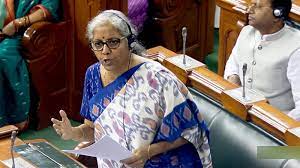

Budget 2024 For a few hours of Budget presentation, preparations start 6 months in advance know why
Union Budget 2024: On Thursday, February 1, 2024, Finance Minister Nirmala Sitharaman is scheduled to deliver the Interim Budget 2024. Every budget includes some items that address the needs of various government agencies, states, union territories, and citizens from all walks of life in India. For those in business and the salaried class, it is one of the most anticipated occasions of the year. During their potentially multi-hour speech, the finance minister makes several significant announcements. But it takes six months to develop the budget that is presented in a few hours. Are you aware of the reason? Be aware of thisInterim Budget 2024: What can we expect when Finance Minister Nirmala Sitharaman presents the Interim Budget 2024 on February 1, 2024? A member of the salaried class for tax breaks; an entrepreneur for programs that support entrepreneurs; an experienced businessman for regulations that can protect their company or boost their earnings.For this reason, most Indians pay attention to the significant statements made by the finance minister during their annual speech. These announcements contained in the budget speech could be made in a few minutes or several hours. However, the preparation time for a speech that lasts only a few hours is about six months.Interim Budget 2024: On February 1 at 11 a.m., Union Finance Minister Nirmala Sitharaman is scheduled to read the Interim Budget 2024 in the Parliament. The Interim Budget, which will implement the major decisions taken by the Center, is the focus of attention. Prior to the Lok Sabha elections, the departing government presents the interim budget during the budget session. After winning the Lok Sabha elections, the newly formed government then presents the comprehensive budget.In addition to discussing the government's accomplishments since 2014, FM Sitharaman's Interim Budget is anticipated to look ahead to Amrit Kaal in 2047. Similar to the previous interim budget, the Budget 2024 paper is anticipated to provide historical context, assess the current situation, and outline plans for the future. A summary of the government's anticipated revenue and outlays through the formation of the next government is the primary purpose of the interim budget. A comprehensive budget, on the other hand, addresses every facet of government funding, including receipts and outlays as well as allocations and policy declarations. A full-year budget outlines the nation's economic course for the whole fiscal year and acts as a strategic plan. The financial data for the transitional phase is provided by the interim budget.The timeline for presenting an interim budget is identical to that of the Union budget during a regular fiscal year. The Interim Budget has grown in importance for the ruling administrations in recent years as a tactical instrument for national elections. It enables them to outline the ruling party's economic strategy and provide justification for reelection.Some significant modifications were announced by former FM Piyush Goyal in the most recent interim budget: > Earnings up to Rs 5 lakh are exempt from income tax; individuals with gross incomes up to Rs 6.5 lakh are exempt from paying taxes if they invest in authorized stocks and provident funds. The TDS level on interest on bank and post office deposits was raised from Rs 10,000 to Rs 40,000. The TDS barrier on rental income was increased from Rs 1.8 lakh to Rs 2.4 lakh. The standard tax deduction for salaried individuals was raised from Rs 40,000 to Rs 50,000. I-T will process returns in a day.> In the following two years, all tax return verification will be completed electronically without involving the taxpayer. a bundle of Rs.The 74-page report, "The Indian Economy: A Review," authored by Chief Economic Advisor V Anantha Nageswaran, was delivered by the NDA administration this year. It provided an assessment of India's economy and outlined difficulties for the upcoming fiscal year. "This is not the Department of Economic Affairs' Economic Survey of India. Following the general elections, it will take precedence over the entire budget. The paper titled "Indian Economy–A Review" stated, "This review offers a brief sketch of the outlook for the economy in the coming years and takes stock of the state of the Indian economy and its journey over the last ten years." Following the presentation of the Interim Budget, a vote-on-account is held by the Parliament. This clause enables the government to secure parliamentaryA complete budget and an interim budget are comparable. One significant distinction is that it covers forecasts for a shorter time frame instead of the whole fiscal year. Without requiring a formal discussion, Parliament can pass a vote-on-account that just addresses spending.



















